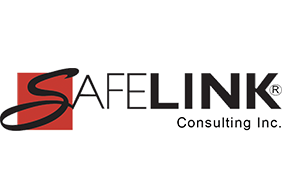Developing a written health and safety program just isn’t enough. For good business practices as well as being able to demonstrate to the Occupational Safety and Health Administration (OSHA) how you measure the effectiveness is mandatory. Safety professionals are continuously being challenged with justifying their existence so if you’re the Safety Coordinator for your company now’s the time to put together a plan to demonstrate the value of safety and the impact of your safety programs.
All the effort put into the development and implementation of a health and safety program deserves the ability to be measured. Think about how you would answer the question: How do you measure the effectiveness of your health and safety program? Not only will this information that is going to be covered in this article help you answer that question if asked by OSHA, but it will help you determine the best methods for you to use in your business.
Effectiveness needs to be measurable and those measurements need to be quantifiable. Quantifiable means it can be measured or counted. You may be familiar with key performance indicators (KPIs). KPIs refer to a set of quantifiable measurements used to gauge a company’s overall long-term performance. KPIs specifically help determine a company's strategic, financial, and operational achievements. The health and safety of your workforce attributes to your company’s ability to meet your customer’s expectations, therefore, it is a critical component of strategic planning.
Here's a list of elements that can affect your business and how their effectiveness can be measured:
Work-related injuries and illnesses: This is the first one most employers state when asked the question above about how they measure the effectiveness of their health and safety program. It’s an important factor and should be easy to measure by looking at workers’ compensation claims. If all injuries and illnesses are not processed through workers’ comp, then there may be other records available. OSHA only requires certain injuries and illnesses to be recorded on the Form 300 so there could be first aid that was administered due to work-related injuries. How is that being tracked? Your measurement activity would be to track all work-related injuries by location in facility, cause, time of day or workshift, was safety equipment in use, etc,
New hire training: OSHA requires an employer to train workers on the hazards that they will encounter in their job. Are your new hires being trained immediately upon hire and prior to being expected to perform tasks that are hazardous? If injuries are occurring with new hires, then investigate whether or not the worker received adequate safety training upon hire that if more effective could have prevented the injury. Your measurement activity would be to track injuries to new hires by reviewing training records to determine if the injured worker received training on the task involved, how could the training be improved, etc.
Training when new hazards enter the workplace: If an investigation shows that inadequate training, or no training, was conducted when a new hazard entered the workplace, then the training program should be enhanced. Your measurement activity would be to track new hazards and if and how training was accomplished.
Annual training: Certain programs require annual refresher training, however, an overall refresher training can be beneficial to remind workers each year of the safety precautions. If during the year, it has become evident that special emphasis needs to be placed on a certain hazard, then ensure that it is included in the annual training as well as any special training sessions during the year. Your measurement activity would be to track contents of annual training in order to determine how it can be improved each year.
Updates to Health and Safety Manual: All written programs should be kept up-to-date at all times. Typically the Safety Coordinator is responsible for maintaining these programs. If an OSHA inspector wants to review your written documentation, you want to know that it is up-to-date. A measurement activity could involve assigning another individual the responsibility of also monitoring the programs.
Ongoing training: Provide safety information and training on a regular basis to workers so it is evident that safety is an important part of your business’ culture. The Safety Coordinator could conduct a safety topic at least monthly in employee meetings or provide a handout or flyer to address a particular safety topic to workers. A measurement activity would be to establish the frequency of dissemination of safety information and checking to ensure that the goal is being accomplished.
Maintenance Records up-to-date: Preventive maintenance on equipment should be documented so this could be a measurable element of your safety program. Well-maintained equipment is safer for the operators. A measurement activity would be to ensure that the individuals responsible for the maintenance are performing the maintenance.
Your course of action is to take the measurement activities described above plus any others that you feel are important and set up a tracking system. By doing some careful measurement and reporting you can show management the positive impact the safety program has on not only preventing work-related injuries and illnesses, but also how it helps to retain workers, improve absenteeism, and provide a workforce that can meet your customers’ expectations.
Need assistance with measuring the value of health and safety for your business?
Need an employee Health and Safety Manual for your business to assist in meeting OSHA requirements? Contact SafeLink Consulting for customized safety programs specific to your industry.
Learn more about what SafeLink Consulting can do to help your business with compliance services, including safety compliance, to meet OSHA training requirements and quality system consulting to meet FDA compliance. SafeLink Consulting assists businesses with workplace safety training, infection control training, HIPAA training online, quality systems, assessments, audits, due diligence, and more.
Industries include:
Dentistry compliance - assisting the dental practice with meeting requirements for OSHA, HIPAA, EPA, and CDC guidelines, patient safety and employee health & safety
Dental Laboratory compliance - assisting the dental lab with meeting requirements for OSHA, FDA, and CDC guidelines, employee health & safety, plus FDA requirements for lab manufacturing custom implant abutment /gmp for medical device manufacturers
Medical Device Manufacturers compliance - assisting with meeting OSHA compliance & FDA requirements, GMP - good manufacturing practices
General Industry compliance - assisting with OSHA compliance and FDA compliance as it pertains to the specific business
Beverage Industry compliance - assisting beverage businesses such as the craft brewery, winery, cidery, distillery, vintner with meeting OSHA compliance, health & safety, FDA requirements / GMP - Good Manufacturing Practices
Get notification when new regulatory compliance training courses are available plus upcoming news and events by subscribing to our email news.







Leave Comment